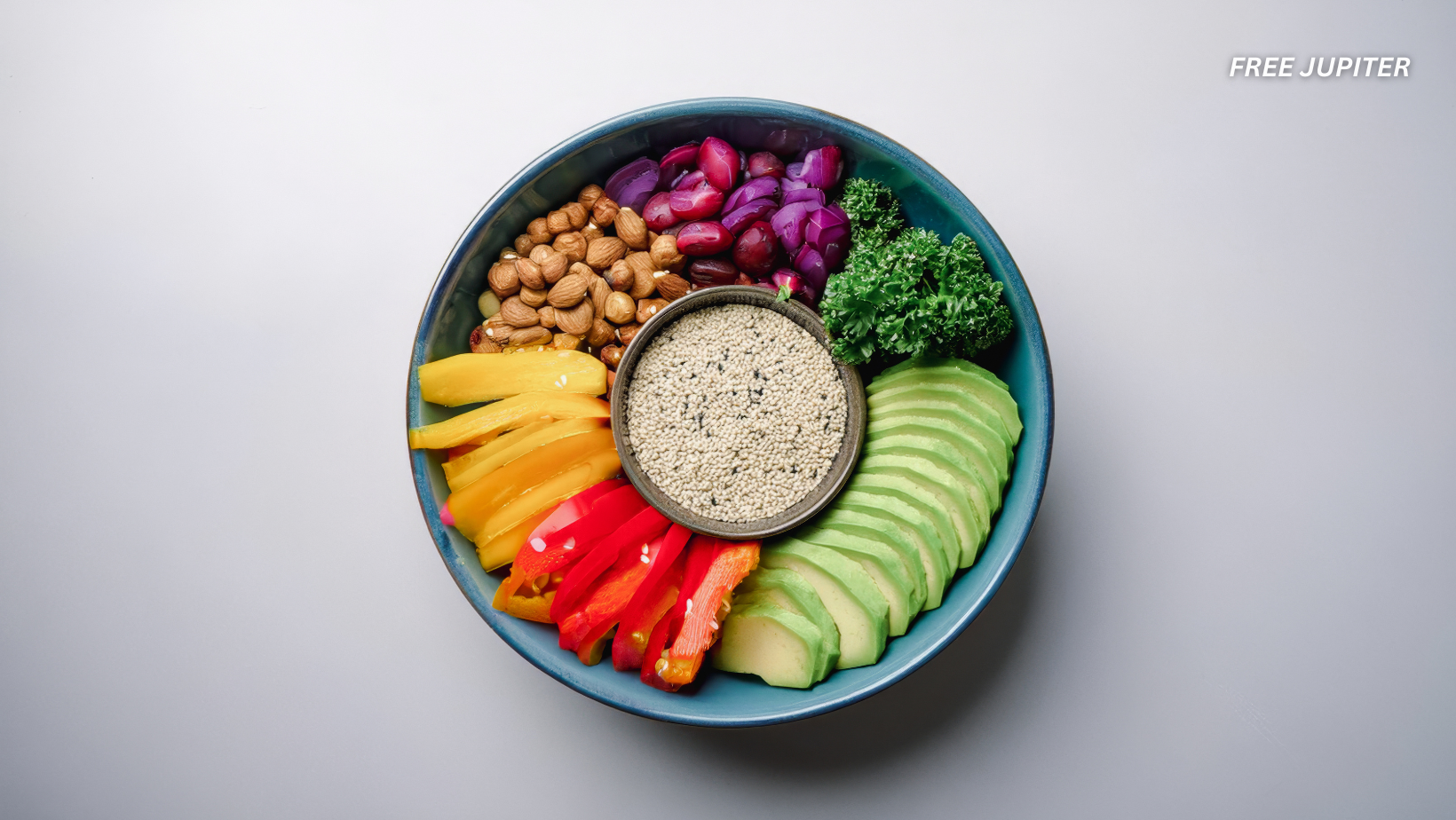Fiber often flies under the radar in conversations about nutrition. Yet, it quietly performs a multitude of tasks that keep the human body in working order. From keeping our gut bacteria happy to slowing the pace at which sugar enters our bloodstream, fiber is a powerhouse. But how much of this nutritional MVP should you actually be eating?
According to one of the leading voices in cardiology and aging science, Dr. Eric Topol, the answer might surprise you. If you think you’re getting enough fiber, chances are—you’re not even close.
Let’s dive deep into this overlooked nutrient, explore why it’s essential for long-term health, and lay out exactly how much fiber you should aim for to guard against diseases that tend to creep up with age.
The Fiber Foundation: A Quick Overview
To begin, fiber is a type of carbohydrate but unlike its fast-digesting relatives, fiber doesn’t break down into sugar. Instead, it remains relatively intact as it journeys through the digestive tract. That might sound unimpressive, but this unique trait is the very reason it’s so beneficial.
There are two main types: soluble fiber, which dissolves in water and can help lower cholesterol and blood sugar, and insoluble fiber, which adds bulk to stool and keeps things moving through the intestines. Both are crucial, and the foods we eat usually contain a mix of the two.
So where does Dr. Topol stand on the fiber issue? His advice is clear and grounded in science, eat more of it, and make sure it comes from real, plant-based sources.
What the Longevity Doctor Recommends
Dr. Eric Topol has made waves in both the cardiology and aging research communities. His perspective on aging well, outlined in his book Super Agers: An Evidence-Based Approach to Longevity, includes a big nod to fiber-rich foods.
He personally sticks to what’s considered a Mediterranean-inspired eating pattern largely composed of vegetables, fruits, legumes, nuts, seeds, and whole grains. These foods have one vital thing in common: they’re rich in fiber.
According to Topol, he makes a deliberate effort to consume about 25 to 30 grams of dietary fiber every single day. This isn’t a casual suggestion it’s a target he actively hits as part of his routine for long-term wellness.
Among his go-to fiber-packed snacks are nuts and seeds. These not only provide ample fiber but also deliver protein and healthy fats three nutritional wins in one handful.
Read more: Say Goodbye to These Small Habits If You’re Serious About Looking Younger
Are You Getting Enough?
Despite the clear benefits of fiber, most people fall short. Data from the U.S. Department of Agriculture (USDA) indicates that the average American adult consumes far less than the recommended amount. The general guideline is 14 grams of fiber per 1,000 calories consumed. If you eat about 2,000 calories a day, your target should be 28 grams of fiber. Simple math but easier said than done.
Topol believes many of us have skewed our diets away from fiber-rich foods and toward what he refers to as fiber’s antithesis: ultra-processed meals. These are usually high in refined carbohydrates and stripped of fiber, leaving the body craving something substantial but receiving none of the lasting nourishment.
Why Fiber Deserves a Bigger Spotlight
Let’s talk about what fiber actually does for your body—and why a daily dose could be the missing link to preventing chronic conditions that become more common with age.
- Digestive Harmony: Fiber plays a pivotal role in maintaining regularity. It helps form stool bulk, making bathroom visits more predictable and less problematic.
- Blood Sugar Stability: Soluble fiber slows the digestion of carbohydrates, which helps regulate blood sugar spikes—especially important for those managing or at risk for Type 2 diabetes.
- Cardiovascular Protection: Certain fibers bind to cholesterol particles and carry them out of the body before they can cause trouble. This effect helps reduce the risk of heart disease.
- Fullness Without Excess: Fiber creates a sense of satiety, helping people feel full longer after eating. This can aid in weight management without the need for constant snacking.
- Long-Term Disease Prevention: Perhaps the most compelling reason to eat more fiber is its relationship to lower disease risk. A massive 2019 meta-analysis involving 185 studies concluded that high-fiber diets are linked with a 15–31% drop in rates of heart disease, colorectal cancer, Type 2 diabetes, and even death from all causes.
That’s not a small margin. It’s a massive gain for simply adding a few more fibrous foods to your plate.
Aging Gracefully with Fiber
The connection between fiber intake and aging isn’t merely theoretical. The diseases that fiber helps prevent colon cancer, diabetes, and cardiovascular conditions are the very ones that become more prevalent with age.
Colon cancer rates are rising in the U.S., especially among younger adults. Heart disease continues to top the global charts as the leading cause of death. The question isn’t whether we need fiber, but whether we’re making space for it in our increasingly fast-paced, packaged-food world.
Topol argues that eating more fiber is one of the simplest, least expensive, and most natural ways to delay or prevent the onset of these age-related diseases. And the evidence backs him up.
Read more: If You Lose Interest In Leaving Your House As You Get Older, There Are 30 Reasons Why
Don’t Buy a Supplement Just Yet
Before reaching for a bottle of fiber powder or chewable tablets, Topol and other health experts advise getting your fiber from food first.
Whole foods are nutritional packages, offering more than just fiber. They contain antioxidants, vitamins, minerals, and plant compounds that work synergistically in ways no supplement can fully replicate.
Supplements might be helpful in certain situations for instance, individuals with specific medical conditions but for the general population, real food remains the gold standard.
Where to Find Nature’s Best Fiber
If you’re wondering where to start, begin with your grocery list. Here are several high-fiber options that are both versatile and nutrient-rich:
- Sweet potatoes: Not only are they rich in fiber, but they also offer complex carbs and beta-carotene.
- Avocados: Creamy and satisfying, avocados pack fiber along with heart-healthy fats.
- Black beans: A staple in many cuisines, they provide fiber, protein, and antioxidants.
- Pears: With skin intact, these juicy fruits are a refreshing and fibrous snack.
- Chickpeas: Excellent in salads, soups, or roasted for crunch, chickpeas bring fiber and plant protein.
- Almonds: A handful of these offer fiber, protein, and good fats—a trifecta of nutrients.
- Broccoli: This cruciferous veggie is not only fiber-rich but also high in immune-supporting vitamins.
- Lentils: A budget-friendly, fiber-heavy option for stews, curries, or bowls.
- Raspberries: Among fruits, these are fiber powerhouses. One cup delivers about 8 grams.
The key is variety. No single food provides everything, but by mixing and matching these fiber champions, you can easily reach the 25–30 gram goal without resorting to synthetic aids.
Read more: New Infrared Contacts Let You See in the Dark — Even With Your Eyes Shut
The Bottom Line
In a world where nutritional trends shift rapidly, fiber remains a steady and reliable ally. It doesn’t come with celebrity endorsements or flashy marketing, but its health impact is backed by decades of research.
Dr. Eric Topol’s message is clear and refreshingly simple: eat more plants, aim for 25 to 30 grams of fiber a day, and treat food as preventive medicine.
Whether you’re 25 or 75, it’s never too early or too late to get serious about your fiber intake. With every plant-based meal, you’re not only feeding yourself today but also investing in your future.
And if that means grabbing a pear instead of a pastry or tossing lentils into your salad, it’s a small shift with the power to transform your health in the long run.










